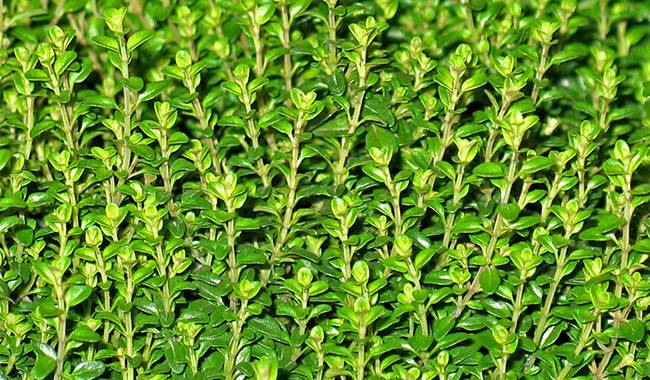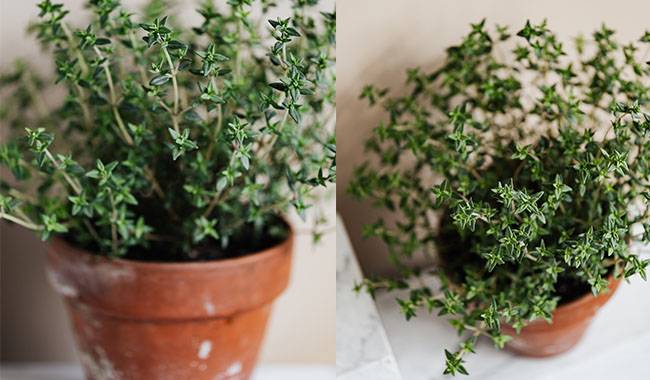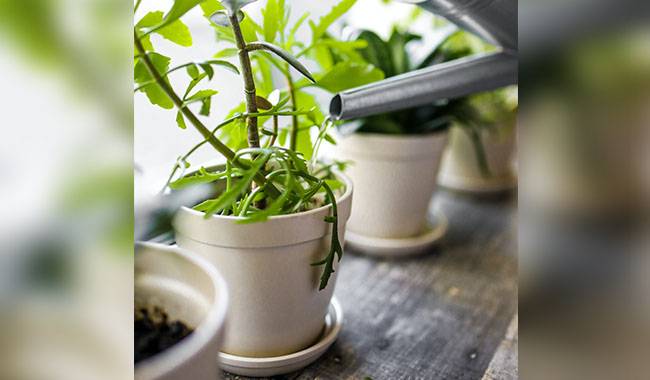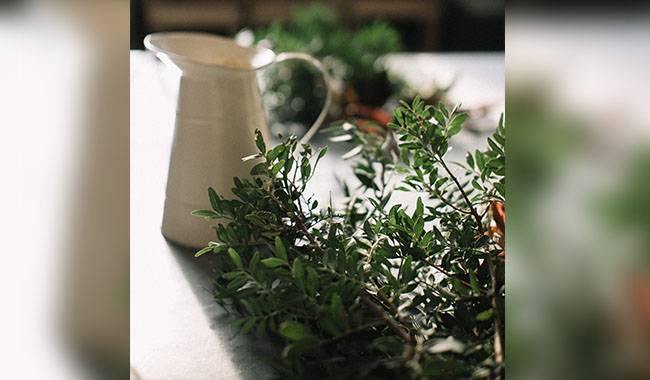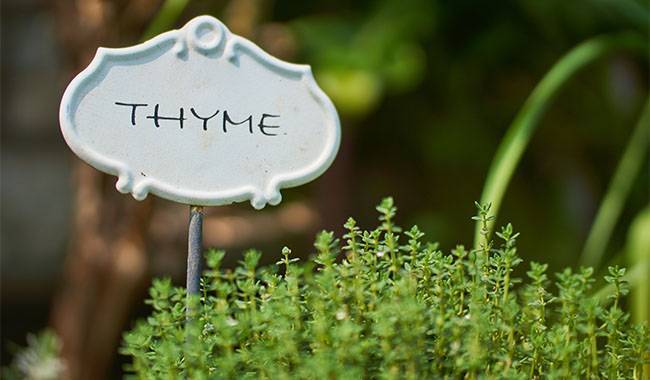
How to plant thyme: planting, care, and harvest? Thyme shrub or bush is a member of the genus Yarrowia maxima. This plant originated in North Africa. Thyme and thyme are in some cases the same plant, but only when it comes to creeping thyme.
The common names of this herb are lemongrass, wood acacia, incense, Chewbacca, and heather. There are several hundred species in this genus, found in Greenland and Eurasia. This crop is in demand in the perfume and food industries, as well as in medicine.
FACTS ABOUT THYME
Thyme is undemanding and unpretentious. Its fragrance will delight you, will cure you of diseases, and will make your eyes enjoy the delicate flowers.
In addition, the plant is endowed with magical properties. Since ancient times, witches and sorceresses charmed men, husbands “female herb”, so-called thyme, who came to us from the distant Mediterranean region.
Girls and women collected it and dried it in the sun, sewn it into pillows and clothes, put it under mattresses, and hung it around their necks with amulets. When a man left home to fight, a sprig of thyme was sewn into his clothes as an amulet against disease and death.
Women believed that the power of this herb would protect them from losing their husbands, bestow happiness on women, and ward off evil spirits.
In our time, this magical herb was also used to treat alcoholism than to save men from this terrible disease and save the family.
“Female herb” – all these names only confirm the importance of thyme in people’s lives, its undeniable role.
So, what is this “miracle worker”? How does it reproduce? How does it grow? What does he need to grow so that he can share with us his miraculous properties and, finally, how to grow thyme in a greenhouse?
We will consider several options. But, before that, let’s learn a little about it.
CHARACTERISTICS OF THYME
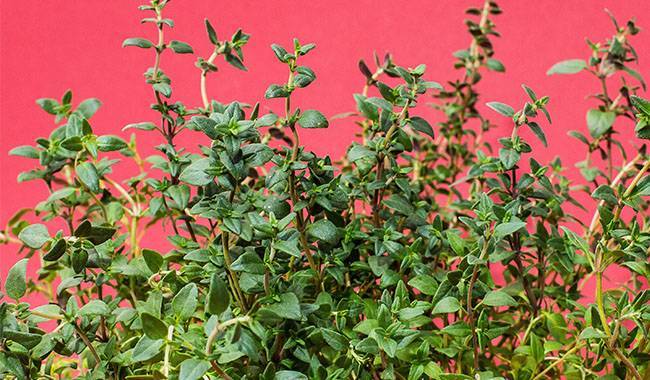
Thyme, or thyme as it is also called, is a rather low, semi-shrub up to 30cm (11.8inch) tall, from the family Yasnus.
Its stems are erect or prostrate, hairy, and woody. The inflorescence occurs at the ends of the branches. Thymus blooms in pink, yellow and white.
The flowers are small, but they look very beautiful. During flowering, the soil is literally studded with tiny stars and you can barely see the ground.
Thyme is made to brighten up your Alps. It spreads and reproduces quickly, divides easily, and takes root instantly in new places.
This plant attracts bees, so you won’t have the hassle of pollinating other plants. See how many reasons there are to plant thyme in your own backyard or flower bed.
It looks great with other flowers as if it’s shading them. And on warm summer evenings, it will give you its subtle nectar scent.
PROPERTIES OF THYME: HAZARDS AND BENEFITS
Therapeutic properties of thyme
The medicinal properties belong to the above-ground part of thyme. Infusions and decoctions are prepared with antibacterial, coating, and expectorant properties for the treatment of whooping cough, bronchitis, maxillary sinusitis, bronchitis, angina, sinusitis, bronchopneumonia. This funding helps to dilute the phlegm and stimulate the bronchial glands.
Preparations made on the basis of thyme are recommended for neurasthenia, neuralgia, diseases of the gastrointestinal tract (enteritis, dysentery, dyskinesia, atonic, intestinal cramps, and flatulence).
Even this culture has shown high effectiveness in the fight against pathogenic microflora, characterized by insensitivity to antibiotics.
If you sleep with a pillow filled with thyme, then headaches and insomnia will no longer bother you. Such herbs contain bitterness, gums, essential oils, tannins, organic pigments, and minerals.
The essential oils “white thyme” (fresh) and “red thyme” (aged) have a warming effect on the skin and are used for cosmetic and medicinal purposes.
However, when using this means, it is important to strictly follow the instructions and dosage. Most importantly, consult a qualified specialist.
Contraindications of thyme
Due to the high content of thymol in this herb, it is not recommended for patients with heart and kidney failure, gastric and duodenal ulcers, especially in the acute phase.
The herb is also contraindicated during pregnancy, as it may cause uterine contractions. There is a high risk of hyperthyroidism (basal disease) with prolonged use or overdose of thyme preparations.
Such preparations should not be used for the treatment of children under two years old.
BRIEF DESCRIPTION OF CULTIVATION
- Sowing: Sowing thyme seedlings is done in mid-March. Plants are planted in the open from mid-May to the end of May.
- Flowering: The bush flowers from June to August. Also, the first flowering occurs in the second year of the bush’s growth.
- Light: The site can be sunny or semi-shady.
- Soil: Nourishing lightly drained alkaline or neutral.
- Watering: Water moderately only when necessary, but increase the frequency of watering when the shrub will bloom. If it rains a lot in summer, there is no need to water thyme.
- Fertilization: Fertilization is only necessary when growing in poor soil and introducing horn meal into it, and the bed should be covered with a layer of mulch (decomposed material).
- Pruning: Shorten the stem by 2/3 in spring and after flowering.
- Propagation: by cuttings, sowing, and clumping.
- Harmful insects: aphids, sand beetles, grass weevils, and weevils.
- Diseases: In case of high soil moisture, the shrub is defeated by fungal diseases.
CHARACTERISTICS OF THYME
Thyme bushes can reach a height of about 35cm (13.7inch). The woody stems can be erect or prostrate and the flowering branches can be erect or prostrate.
The woody root is a taproot. The leaves of this plant may vary in size, shape, and veining depending on the species.
In most cases, they have short petioles and the leaves are stiff, leathery, less often full, and sessile, while in the Far Eastern species the leaves are serrate.
The long or globular inflorescences are located at the tips of the branches and consist of pink, white or purple flowers.
The fruit is a capsule of four globular fruits with a bitter taste and pleasant odor, used as a spice black thyme. The flowering period of this plant is from June to August. The fruit ripens in August and September.
It is a relative of lavender, oregano, rosemary, hyssop, basil, motherwort, sage, lemon balm, and mint.
This plant has become very popular among gardeners in recent years and today it is grown in gardens almost as often as celery, dill, and parsley.
SOWING SEEDLINGS OF THYME
When to sow seeds in germination beds
The seeds of thyme are sown into sprouting beds in mid-March. Because the seeds are very small, it is recommended to combine them with river sand in a ratio of 1:3 before sowing.
The container is filled with a cactus mixture and a third of black soil is also added. After that, the seeds are evenly distributed on their surface.
For sowing, a substrate consisting of peat and sand (1:1) can also be used, which must be sterilized. The seeds should not be embedded in the soil mixture, but covered with a thin layer of sand.
The seeds are then carefully watered with a fine sprayer, the container is covered with glass from above and moved to a well-lit, warm place.
RULES FOR GROWING SEEDLINGS
Seedlings should be grown in indoor conditions for at least 8 weeks. It is best to plant the plants in the open ground at 70 days of age. After the seedlings emerge, place them in the shade and remove the glass.
Water with a sprayer as soon as the top layer of the substrate has dried slightly. The room where the seedlings are located should be well ventilated, but drafts need to be prevented.
GROWING THYME ON A WINDOWSILL
Thyme can be grown in indoor conditions. To do this, you will need a pot that reaches no more than 15 cm (5.9inch) in cross-section, and at the bottom, it is necessary to make a drainage layer, the thickness of which should be 20 to 30 mm.
Drainage can be done by adding a layer of potting soil (see above). The soil mixture should be moistened and a few seeds evenly distributed on its surface. A 0.5cm (0.19inch) layer of the substrate should be spread on top and then moistened with a sprayer.
Cover the container with cling film or glass and move it to a south-facing window to protect the seeds from direct sunlight. The seeds have a high germination rate. After seedlings emerge, the cover should be removed.
Watering should be done moderately after the upper substrate has dried. after 8 weeks, remove all weak seedlings and keep only the best-developed ones.
Their cutting should be carried out fairly frequently in order to obtain aromatic and fresh green color for as long as possible while trying not to let the shrubs flower.
GROWING THYME IN THE OPEN GROUND
When to plant
Planting thyme seedlings in the open ground should be done in mid to late May. Suitable planting areas should have good light.
It can also be planted in a shady area, but such bushes do not develop well and strongly elongate.
The soil should be well-drained, nutrient-rich, well-lit, and alkaline or neutral. If the soil is clayey and wet, the bush may become contraindicated and needs to be well-drained.
Preparation of the planting site should be engaged in the fall time. First, all plant debris should be removed and then reclaimed, and the soil should be well-rotted manure or compost, as well as potash and phosphorus fertilizer.
Before sowing in spring the soil should be loosened and a solution of urea (20 g in 1 liter of water) should be poured in. When planting shrubs between them, a distance of 20-25cm (7.87-9.84inch) should be maintained, with a row width of 40-50cm (15.7-19.6inch).
Care of thyme
To prevent waterlogging of the shrub’s root system and the formation of ground crusts, the soil should be loosened regularly. Weeds in the bed are pulled and weeded as soon as they appear.
To reduce the amount of weeding and loosening, the surface of the plot should be covered with a layer of mulch. The bush should also be pruned regularly at the beginning of spring or after the thyme has finished flowering.
The stems should be shortened by about 2/3 before they start to harden. Bushes should be pruned so that they become compact and dense.
How to water
This culture reacts extremely negatively to the retention of liquid in the roots but is drought tolerant. In this regard, thyme watering should only be done when it is really needed.
When the shrub starts to flower and the young stems begin to sprout, it should be watered more often. If it rains a lot in summer, watering is not necessary at all.
Fertilization
Thyme does not need much fertilizer, especially if all the necessary fertilizers have been added to the soil before planting. If the bed is poor, the plants only need fertilizer – a mulch with the rotten matter or fine horn meal.
WHAT CAN I PLANT AFTER THYME?
Since thyme does not require a lot of nutrients and is not consumed after it like potatoes, cabbage, or celery, you can plant any plants after it, but they should not be members of the leafy lily family.
PESTS AND DISEASES OF THYME
Pests of Thymus vulgaris
This culture is very resistant to various pests and diseases because it contains essential oils. However, if you do not follow the rules of the agricultural techniques of this culture, then sand bears, meadowlarks, aphids, and weevils will settle on the shrub.
Meadow moths
Meadow moth caterpillars gnaw on the underside of leaf panels and use this as a centerpiece to weave leaf panels with cobwebs. They can also damage flowers and stems.
In order to prevent these pests, it is necessary to ensure that the plot is free of weeds and that it is re-cultivated in the autumn. To get rid of such pests, the bushes are sprayed with means Decis solutions.
Shametrak
Shame drake is a black beetle that reaches 0.7-1cm (0.27-0.39inch) in length and it damages the above-ground part of the shrubs. To get rid of such a pest, it is necessary to use insecticide-poisoned baits.
Aphids
Aphids are sucking insects that suck the sap from the young stems and leaf plates and bite them. Use pesticides such as anti-rain and violin to kill them.
Weevils
Weevils harm flowers by dropping larvae in the buds. To remove them, spray the bushes with a solution that is harmless to humans.
Diseases
If such a culture is not properly cared for, or if the shrubs are watered too abundantly, then it can be the cause of fungal diseases.
To cure the affected shrubs, treat them with fungicidal drugs: Ridomil, Horus, Fodazol, Topaz, or other means of similar action.
However, it is better to try to ensure that the plant does not get sick than to treat it for a long time afterward. Proper watering is sufficient.
HOW TO HARVEST THYME
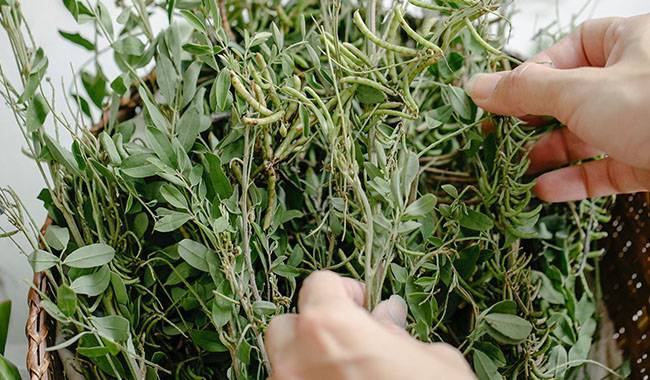
It is harvested during the flowering period. It is usually at Pentecost. It is believed to have the greatest supply of healing properties during this time.
Do not cut or break any branches as you may damage them. Thyme does not sit close to the ground and can be easily torn off.
It is best to take a pair of scissors and cut off the branches and leaves. Drying techniques for thyme are standard for all herbs. On thick paper or cloth, without direct sunlight, sometimes turned over, this pungent medicinal plant is dried in the sun.
It is stored in bundles in a dry place. Many people put it in linen bags and keep it right in the kitchen.
Thyme varieties are abundant: common variety – up to 15cm (5.9inch), lemon variety – up to 10cm (3.93inch) with lemon flavor, dwarf variety – up to 7cm (2.75inch), creeping variety – up to 15cm (5.9inch) in height, etc.
I want to talk separately about growing thyme on windows. Prepare cuttings well in advance, in the summer. Cuttings can be rooted in pots with soil immediately after taking them.
Cover the top with a jar, but ventilate it often. The stubble will appear and form in the third week, then remove the jar and the plant is already planted in a permanent pot. The soil mix is available at the store and is already ready to use.
You can also soak thyme in water, in this case, take a dark container or specifically darken the glass.
Place the container with the cuttings in a plastic bag tied and filled with air. In this case, rooting can be expected by the twentieth day.
No ventilation is needed, but keep an eye on the windowsill, which should not fall below 20°C (68°F). If it is freezing outside, it is best to move the container containing the cuttings farther away.
The water temperature should not drop below room temperature. The rooted cuttings are then placed in pots and fertile soil is added. You can feel the joy of a job well done when the thyme starts to grip the soil and the first shoots appear.
Don’t rush to let him grow, when it takes off, it will fill the room with fragrance, purify the air, and allow you to cut a few branches to make tea with thyme and add a few more, just in time to decorate your kitchen when you bake fish and meat.
Plant it in a beautiful triumphal arch and get aesthetic enjoyment. There are contraindications to the use of thyme. It is important to know that it is contraindicated in patients with kidney disease because there is slight toxicity that increases the load and can cause aggravation of the filtering organs.
And pregnant women should not abuse thyme, because it contains thymol, which increases the tension of the uterus and complicates the pregnancy.




